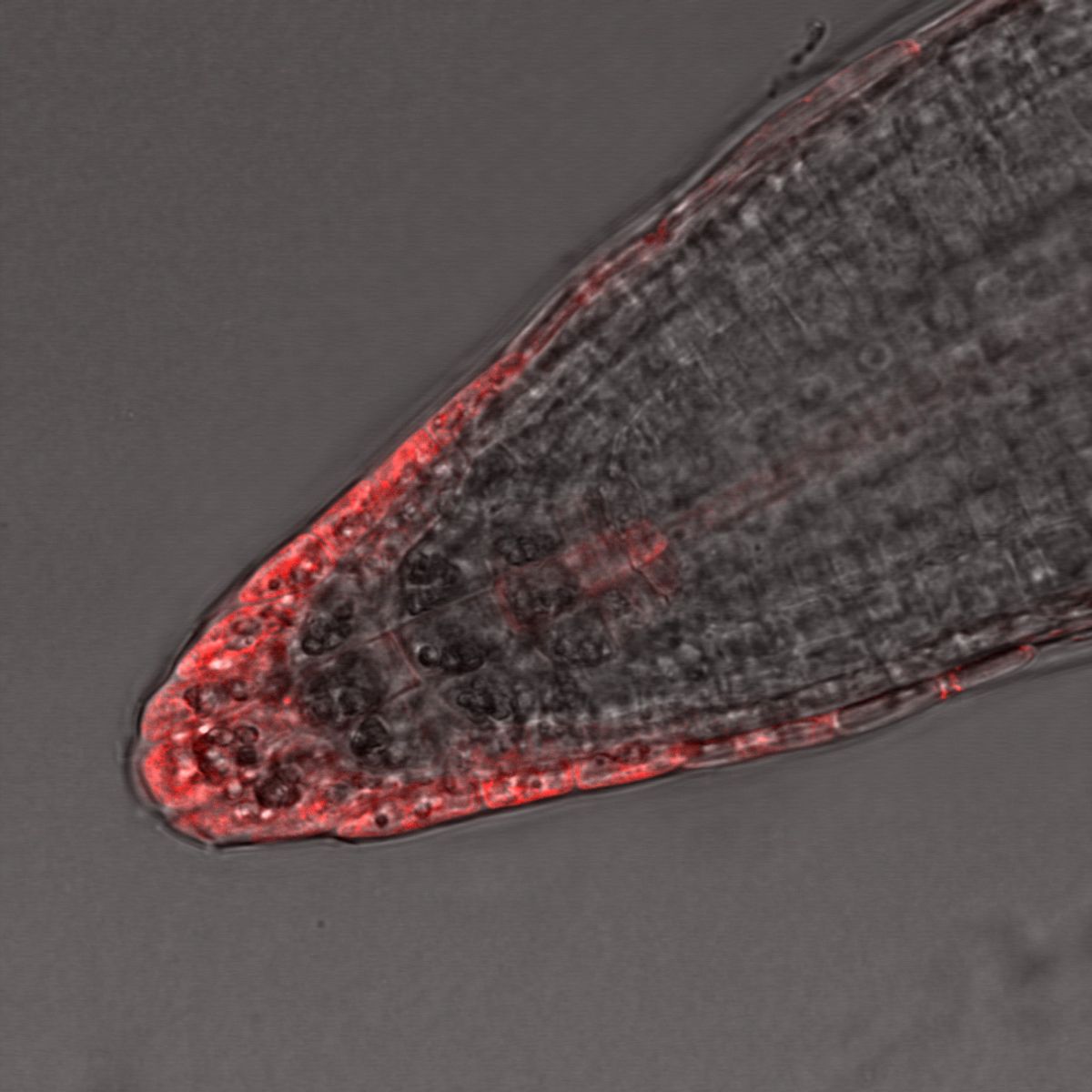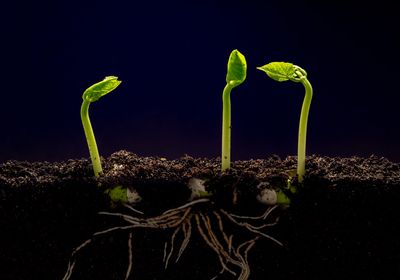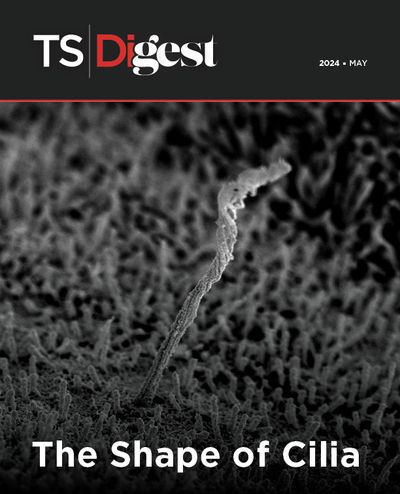How Do Plants Know Which Way is Up?
Despite centuries of study, scientists still make new discoveries about the mechanisms of gravitropism.

“My dear sir,” wrote botanist Thomas Andrew Knight in 1806. “It can scarcely have escaped the notice of the most inattentive observer of vegetation, that in whatever position a seed is placed to germinate, its radicle invariably makes an effort to descend towards the center of the earth.”1
More than two hundred years later, attentive observers of vegetation are still working out the molecular mechanisms involved in this process. One of the first major discoveries—the identification of statocytes—occurred in the early 1900s.2 These cells located in root tips contain heavy, starch-filled granules called amyloplasts that settle to the bottom of the cell. However, said Sophie Farkas, a molecular physiologist at the University of Freiburg, the molecular mechanisms that amyloplasts use to signal which way is down have only recently been elucidated.

In 2023, researchers found that tipping a plant 90 degrees triggered phosphorylation of proteins called LAZY.3 This caused the LAZY proteins to hop from the cell membrane onto the amyloplasts. Then as the amyloplasts slowly sedimented to the new bottom of the cell, they brought the LAZY hitchhikers with them. When the amyloplast reached its destination, the LAZY proteins hopped off and attached themselves to the membrane on the lower side of the cell.
“From there, we know that the LAZY proteins recruit other proteins,” said Farkas. Eventually, this leads to recruitment of PIN-FORMED 3 (PIN3), a transporter for the growth-regulating hormone auxin. Subsequently, auxins move to the lower side of the root, where they inhibit growth. If the root is positioned horizontally and grows faster on the upper side than on the lower side, the root is forced to curve downwards, toward the center of the earth.
Studying the mechanisms that control the growth and structure of roots may help scientists figure out how to engineer plants that are more drought resistant.
- Knight TA. Philos Trans R Soc. 1806;96:99-108.
- Prankerd TL. Botanical Gazette. 1920;70(2):148-152.
- Chen J et al. Cell. 2023;186(22):4788-4802.e15.


